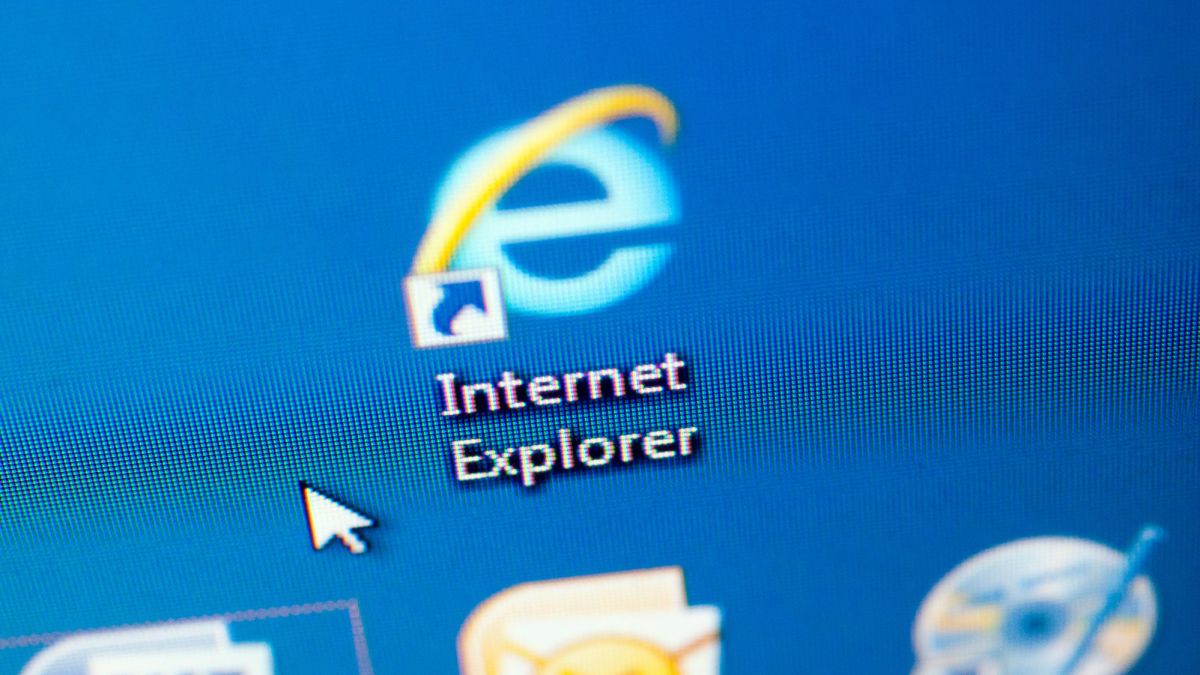The old Microsoft Internet Explorer web browser was officially retired on June 15.
Users will transition to Microsoft Edge
It was a little over a year ago that Microsoft announced the end of IE support for June 15, 2022. Since then, Microsoft has persuaded its customers to migrate to Edge before this fateful date, and to use the “IE mode” for compatibility purposes. IE mode will be supported at least until 2029.
And since last Wednesday, as expected, version 11 of the famous browser is no longer supported by Microsoft. Over the coming months, clicking on the Internet Explorer icon will gradually redirect users to Microsoft Edge. At some point, Internet Explorer will be permanently disabled as part of a future Windows update, and the IE icon on users’ devices will be removed.
The process will migrate data such as favorites, passwords and settings from Internet Explorer to Edge, in an effort to simplify the transition, Microsoft said. If a user wants to delete or manage data at any time in the future, they can do so on Edge from the Settings menu.
The removal of Internet Explorer covers all currently supported versions of Windows 10 Home, Windows Pro, Windows Enterprise, Windows Edu and Windows IoT. Internet Explorer has already been removed from Windows 11.
Internet Explorer: the decline of a giant
Internet Explorer made its debut on Windows desktops in 1995 and by 2004, the browser had captured 95% of the market. Although a number of other browsers existed (including Netscape Navigator, which preceded Explorer), Explorer remained the default choice for millions of people until about 2002, when Mozilla Firefox was released. But now, Google Chrome, Apple Safari and Firefox dominate.
Indeed, Internet Explorer’s popularity has been shaken by the launch of faster browsers such as Chrome and Firefox, while mobile users have taken to new apps to browse platforms such as Google Search, Facebook and YouTube.
The rise of smartphones may have delivered the killer blow, with Apple’s pre-installed Safari browser and Google Chrome on Android phones helping to shift Internet access and use to the mobile realm. In addition, mobile and tablet Internet use surpassed desktop computers worldwide for the first time in October 2016, according to independent web analytics firm StatCounter.
How it ended
Microsoft has released 11 versions of Explorer (with many minor revisions along the way). The firm has added different features and components to each version, but despite this, it has lost the trust of users due to the legendary slowness of its browser.
It would seem that the company has become so accustomed to its monopoly that it has allowed the quality of its product to deteriorate, just when other competitors were entering the battlefield.
Even considering its cosmetic interface (what you see and interact with when you visit a website), Explorer could not offer users the authentic experience of modern websites. Also, from a security perspective, Explorer had its fair share of weaknesses, which cybercriminals were able to easily and successfully exploit.
Although Microsoft has been able to fix many of these weaknesses on different versions of the browser, the underlying architecture is still considered vulnerable by security experts. Microsoft itself has acknowledged this:
“[Explorer] is still based on a 25 year old technology. It is an old browser with an outdated architecture that is unable to meet the security challenges of the modern Web.“
These concerns have led the U.S. Department of Homeland Security to repeatedly advise Internet users against using Explorer.
Chrome remains the most used browser
Chrome was first introduced by Google in 2008, on the open source Chromium project. Being open source means that the software is publicly available and that anyone can inspect the source code that runs behind it. Individuals can even contribute to the source code, improving the productivity, reliability and security of the software. This was never an option with Explorer. In addition, Chrome is cross-platform: it can be used in other operating systems such as Linux, macOS and on mobile devices, and supported a range of systems long before Edge was released. During this time, Explorer was mainly limited to Windows, XBox and some versions of MacOS.
In terms of market share, more than 64% of browser users currently use Chrome. Explorer has fallen to less than 1%, and even Edge currently accounts for only about 4% of users.
It is difficult to say whether Chrome’s current popularity will continue over time. Google will probably want this to continue, as web browsers are important revenue sources.
But Google as a company is becoming increasingly unpopular due to massive data collection and intrusive advertising practices. Chrome is a key part of Google’s data collection machine, so it’s possible that users are slowly turning away.
As for what to do about Explorer (if you’re one of the few people who still have it on your desktop), just uninstall it to avoid security risks. Even if you do not use Explorer, simply installing it can pose a threat to your device. No one wants to be a victim of a cyber attack via a dead browser!



